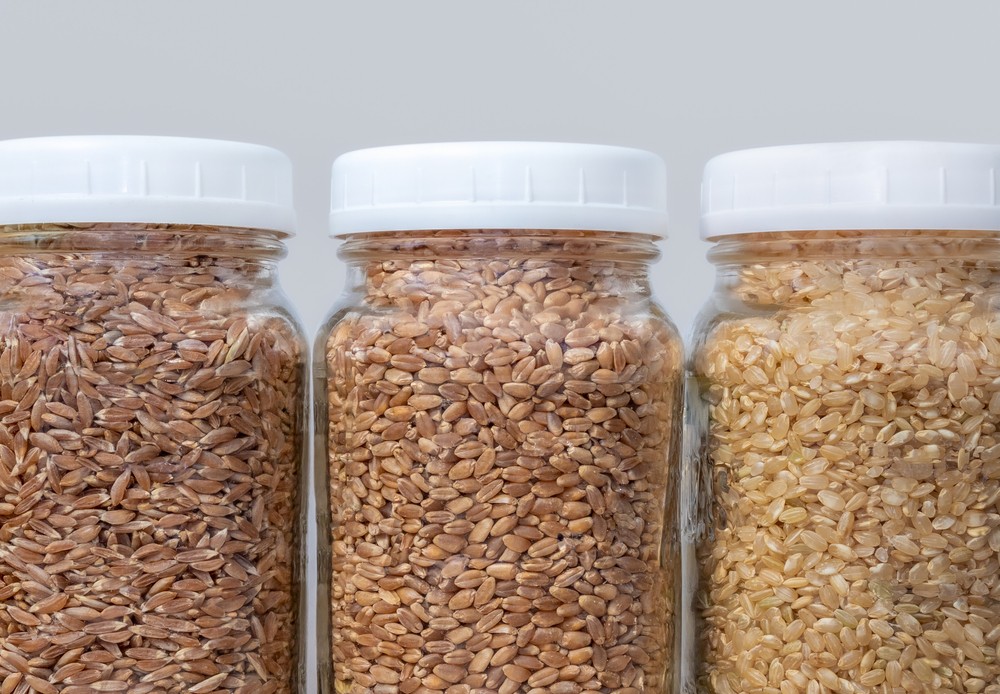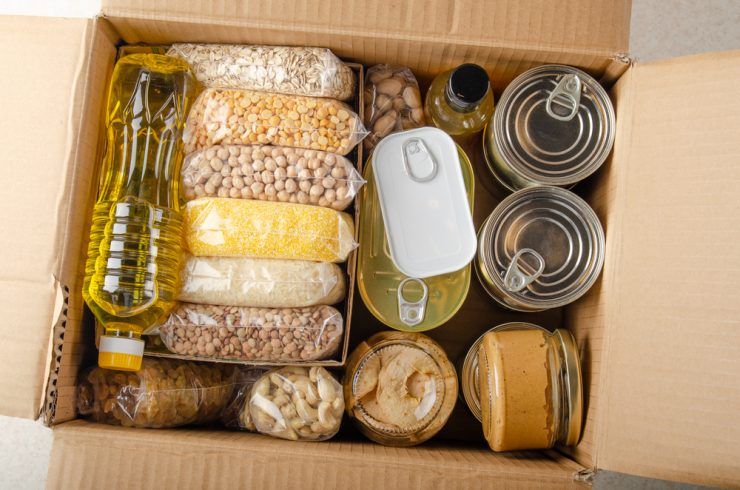Learning how to store food long-term is an important survival skill. Food is a basic need. Going just one day without food may disorient you, and it spirals down into health complications that eventually result in death in the long-term. Unfortunately, a steady supply of food is not always guaranteed.
This has become especially apparent in the wake of the COVID-19 pandemic, whereby people are stocking up on food and other essentials in a panic-buying frenzy.
Now is the time to stock up on food supplies. Most importantly, it is necessary to preserve your food cache for long-term use. Here are expert tips to help you store food long-term.
Best Foods for Long-Term Storage
Different foods have varying shelf-lives, even when stored under the most conducive conditions. Fortunately, many foods can last for months or even years without going bad. Here is an overview of foods with the longest shelf life:
Soft & Hard Grains

Grains are highly nutritious and, most importantly, hardy. Soft and hard grains can last for anywhere between eight and 12 years when stored properly.
Soft grains recommended for long-term storage include:
- Barley
- Quinoa
- Rye
- Rolled Oats
- Pearled Oats
- Hulled Oats
Hard grains recommended for long-term storage include:
- Corn
- Flax
- Spelt
- Kamut
- Buckwheat
- Triticale
- Soft wheat
- Hard white wheat
- Special bake wheat
- Hard red what
- Millet
- Durum wheat
Dehydrated Fruits and Veggies
Fresh fruits and vegetables are highly perishable. However, they can last for up to 30 years when dehydrated and stored in the right conditions. Ideal options include:
- Apples
- Pears
- Peaches
- Plums
- Bananas
- Apricots
- Strawberries
- Green Beans
- Tomatoes
- Potatoes
- Celery
- Carrots
- Cantaloupe
- Blueberries
Dried & Canned Meat
Dried and canned meat can last for anywhere between two and 15 years, depending on the preservation method. Store-bought dried meat has a shelf life of two years, while freeze-dried and vacuum-sealed meat can last for up to 15 years. Canned meat, on the other hand, can last up to five years.
Flour
Flour is ideal for long-term food security for two reasons. For starters, it can last for up to 25 years when stored under the right conditions. Secondly, it is infused with a wide range of multi-purpose ingredients that help achieve a balanced nutritional intake.
Powdered Milk
Milk powder, just like natural milk, is rich in nutrients such as protein, fat, and calcium. Milk powder can also last for up to 25 years.
Sweeteners & Seasoning
Sugars and sweeteners have one of the longest shelf-lives of any food-stuff – they can last indefinitely when stored under the right conditions. Seasonings will also help to spice up your life despite whatever situation you are in, and they can last for up to four years.
Long-Term Food Storage Options & Methods
The first thing that comes to many people’s minds is a freezer or fridge packed with food. Freezers and fridges are ideal for preserving foods in the long-term, but there are other simpler and more reliable methods.
Mylar Bags

Mylar bags are designed to maintain just the right conditions to prevent foods from going bad. They are easy to use. They are also reliable, but only when used in the right way.
On their own, Mylar bags will preserve your food in the medium-term. This is why it is advisable to take extra measures to create the ideal conditions for long-term preservation. For example, it is recommended to use an oxygen absorber and vacuum before sealing the food, as these bags are not completely air-tight.
One of the shortcomings of Mylar bags is that they are fragile. For example, they can burn and tear easily, and they are no match for hungry rodents. As such, a secondary storage unit, such as a secure vault or cellar, is necessary.
Food-Safe Plastic Buckets
Food-safe plastic buckets are bulkier than Mylar bags, but they are stronger and more reliable. For starters, they are air-tight, which makes them great at keeping oxygen out. They are also tough, and you don’t have to worry about rodents chewing their way through the plastic. However, it is still advisable to use a vacuum sealer before sealing the food away.
P.S. It is recommendable to use both Mylar bags and food-secure plastic buckets in your preservation efforts. This essentially provides two-layer protection for your food, especially when there is a risk of oxygen contamination.
Use this video to learn how to properly package your long-term food supplies!
Secure Storage Location
Preserving food is only one of the aspects of long-term food security. Another important aspect is keeping it safe from any foreseeable risk, including changes in ideal preservation conditions or the possibility of intruders. To this end, it is necessary to have a secure storage location – just like a pantry, but more secure and reliable.
Experts recommend an under-ground pantry for food storage. However, whatever your choice of a food storage location, make sure that it is not reliant on secondary solutions such as the HVAC – these systems are not always reliable in extreme conditions.
Best Conditions for Long-Term Food Storage

Freezing, drying, and canning food helps extend its shelf-life, but it does not guarantee that the food will not go bad. This depends on the food’s storage conditions. For example, exposure to oxygen alone can quickly compromise your food’s shelf-life.
The ideal conditions for long-term food storage are:
Low Temperatures
Heat is conducive for bacteria and other microbes that accelerate food decay. To this end, it is recommended to store your food under temperatures below 40 degrees Fahrenheit – a freezer or underground pantry will do!
No Light
Light is also a stimulant to some of the bacteria that accelerate food decay. As such, make sure that the containers are opaque – again, an underground pantry without natural lighting will do!
No Oxygen
Oxygen also accelerates the decay of food, hence the need for air-tight packaging. Do not unseal your food unless absolutely necessary!
Final Thoughts
Unfortunately, the average person cannot last for longer than 30-40 days without food. And, while everyone would like to live in a world where they don’t have to worry about their next meal, recent events have raised concern about just how secure the average person’s wellbeing is.
It is important to brace for the future and plan for the unexpected, and stocking up on food is a good place to start. Upgrade your kitchen into a smart kitchen to improve food storage and make cooking easier!







Add comment